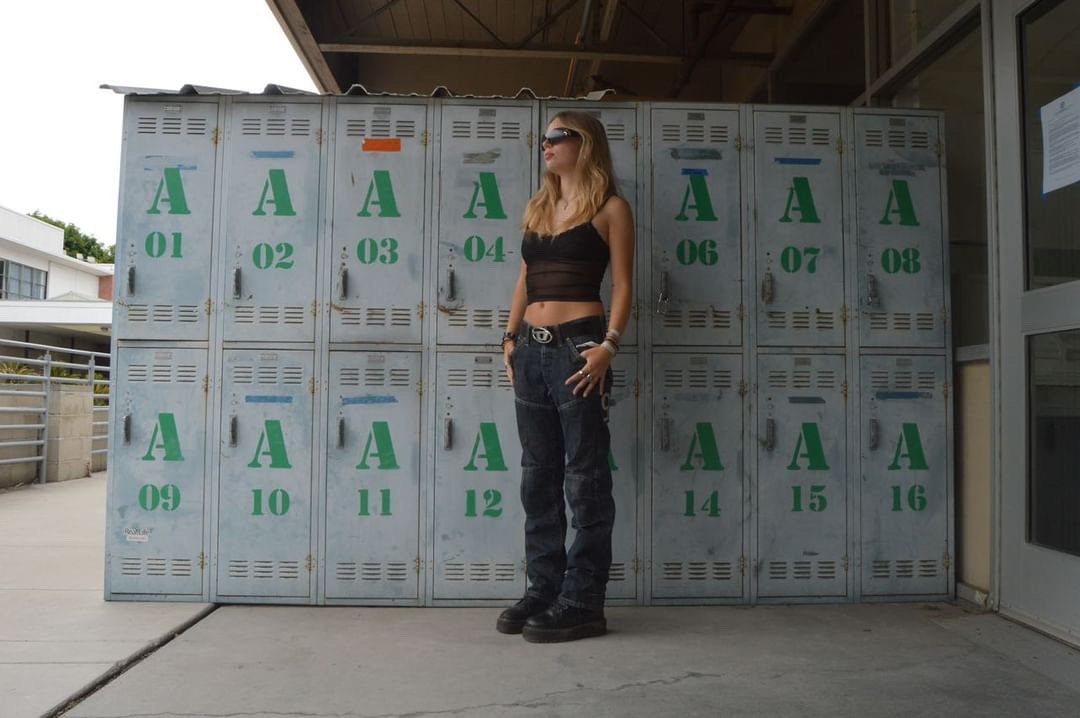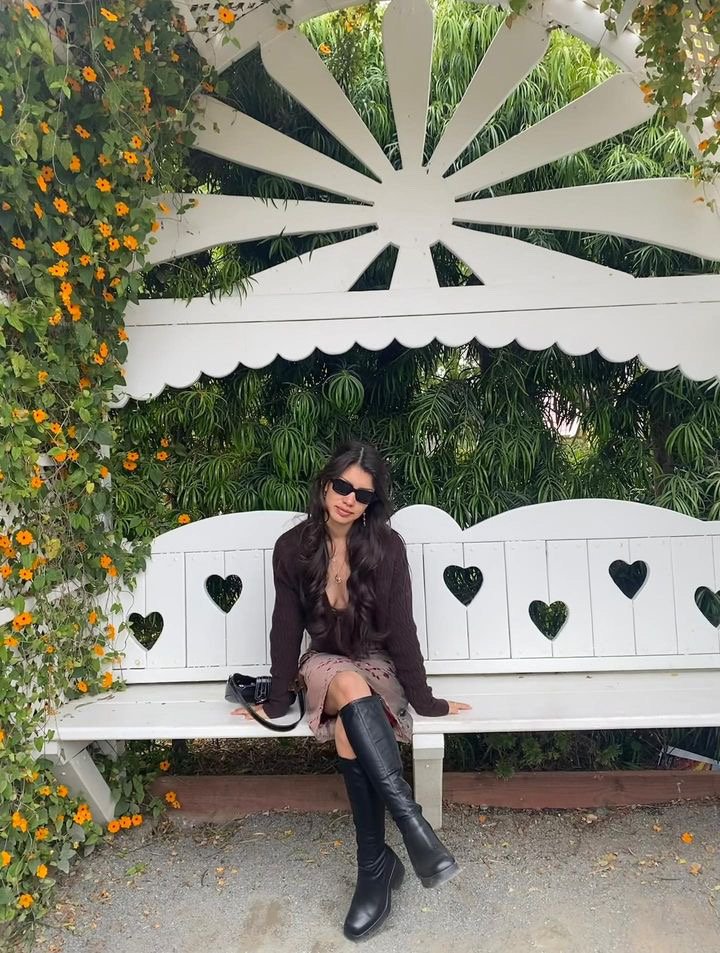The Rise and Fall of Aesthetic Culture
Fashion has never had one specific look. Or better yet, fashion has never had a specific look and stayed that way.
In the ‘60s, there was the rush of the hippie movement with fashion icons like Twiggy and Aubrey Hepburn.
The ‘70s had the eclectic craze from disco bell bottoms worn by icons like Farrah Fawcett to the leather frenzy of the punk rock counterculture worn by stars like Joan Jett and Vivienne Westwood.
Trickling down the rabbit hole from the ‘80s to the ‘90s, as well as the 2000s to the 2010s, fashion has never made one statement.
Societal norms of these eras have gone through many orbits around the sun as well as creative expression through clothes.
In modern fashion, we see influence from many different outlets for creative expression through clothes. With the internet and social media, it’s become easy to identify yourself with what's trending today and follow it.
“I’d say a lot of my style comes from social media,” Sophia Leamy, assistant coordinator for Campus Couture at California State University, Long Beach, said.
Leamy describes her style as an eclectic mixture of androgynous, masculine, and feminine undertones.
Sophia Leamy shows off her bright, eclectic style in the middle of a crowd. Photo courtesy of Sophia Leamy.
“If I’m thinking of direct style influences, I’d say Emma Chamberlain, a little bit.” she continued. “I’d say I get a lot of influence from some of Harry Styles’ stylistic choices as well.”
Philomène Carnel, creative assistant for Students in Fashion at CSULB, describes her style influences from both her experience living in the U.S. and being from France consuming French social media.
“Here in America, I love Emma Chamberlain,” she says. “I also like some famous influencers in France like Léna Situations. She's actually really famous in France because she was invited to the Met Gala last year. I also love Dior and Vivienne Westwood.”
Carnel describes her fashion style as a combination of timeless and vintage, while also embracing modern streetwear.
With young people having style influences like Emma Chamberlain and other fashion icons of our generation, there’s always someone else before that influencer’s time who inspired them in one way or another.
It’s all a repeating cycle.
There’s been an obvious change in how fashion is consumed through media versus how it was consumed 30 years ago. People no longer have the pressure of dressing and fitting into one mold of fashion.
One of the biggest changes includes the recurring phenomenon of aesthetics.
“Aesthetics have always been in fashion, just under a different name,” Abigail Wall, publicity chair for Students in Fashion at CSULB, said.
Abigail Wall keeps it classic with a black and white color palette. Photo courtesy of Abigail Wall.
Wall, who describes her fashion sense as classic feminine with a fascination for textures like fur and leather trim, describes the term “aesthetics” as having changed from one thing to another over the years.
She references a Vogue article where they claim the word “core,” which is a sister term to the word aesthetic, is the new “chic” of today.
But what is an aesthetic?
According to Merriam-Webster, an aesthetic is an adjective or noun describing the theory or conception of beauty and art based on what’s pleasing to the senses.
In today’s younger lens, an aesthetic is a feeling; whether that’s coming from the category of clothes you wear, association with certain music, or areas.
It all comes back to what’s pleasing to the human senses but in a sensationalized way.
However, with time, the concept of aesthetics in fashion has begun to blur the lines between what’s nonconforming to social norms and being the social norm itself.
Carnel brings this new wave of fashion mentality into perspective.
Philomène Carnel poses in front of a row of lockers to compliment her take on streetwear. Photo courtesy of Philomène Carnel.
“I think when you’re really into fashion, it sounds a bit like putting fashion trends into boxes, but they are locked.” she says.
“It’s like if you belong to one aesthetic, you cannot go and buy clothes from another aesthetic.”
It’s as if we’re going backward instead of forward with labeling everything we see.
“There’s not a normal way of dressing at this point,” Leamy states.
There’s a theme of nostalgia going into the way fashion cycles come and go, but that’s not to say that a lot of these styles have never been done before. People love nostalgia.
But like many things, people take it too far.
“I feel like people are just naming things to start a trend, because blueberry milk nails? What is that?” Wall jokes.
This was in reference to this summer’s micro-trend from Tiktok of “Blueberry milk nails,” stemming from the spotting of celebrities like Dua Lipa and Sofia Richie-Grainge wearing a specific shade of baby blue on their nails.
In fact, the internet’s take on labeling certain styles as an aesthetic has come to erase the origin where they come from. In fact, a lot of these aesthetics and returning trends aren’t anything new.
Bertha Orozco, CSULB alumni and vice president of Students in Fashion, explained the downside of trends like the “Clean Girl Aesthetic” because they are being stripped away from their origin as a historical staple for Black and Hispanic women.
“I hate when people just view it as an aesthetic when it has history behind it,” Orozco said. “I've always liked wearing big hoops and like gold earrings and like the outline of my lips a little with some lip gloss because it's part of the Mexican culture that I grew up in.”
Aesthetics such as the Clean Girl originally started from TikTok when Hailey Bieber started showing off some of these fashion looks to her followers.
With the slicked-back bun, lip combos with the dark outlining, and large hoop earrings, the Internet began labeling it as such.
Younger people today have tended to fall susceptible to wanting to “fit in” following all these fashion trends.
Bertha Orozco shows off her style surrounded by bright flowers. Photo courtesy of Bertha Orozco.
Not only have there been social effects of this epidemic, but economic ones as well.
Orozco describes how society tends to cater to the microtrends that go viral on social media for the sake of capitalistic and consumeristic roles.
“In regards to younger people, it definitely influences them because I feel a lot of it has to do with self-confidence and popularity. They're kind of always trying to stay on top of these trends,” Orozco states.
“However, because of the capitalistic society we live in, I feel like it kind of contributes to fast fashion in an immense way because just like the youth are trying to keep up with all these trends, so are the stores that can capitalize off of it.”
Leamy describes people’s need to follow aesthetics as a creative avenue for people to express themselves.
“If people feel like there's a normal way they're supposed to be dressing, they don't feel as alone in whatever kind of aesthetic that they want to put on,” Leamy said.
Aesthetics have often stemmed from people’s attempts to start something new and find common ground with people who share similar styles and interests.
It’s giving into human instinct at its core. It’s only much more impactful when viewing it from a young person’s lens.
It all comes back to wanting to seek community. That’s what this is all about, right?
“I feel like, especially in high school, I was super susceptible to trends,” Wall said.
“And I feel like that's still the same where a new aesthetic pops up on social media and someone who doesn't really know their personal style yet doesn't really have that foundation yet…It's not giving you a chance to grow into your own style.”
As society continues its cycle, so do people’s interests. But at the end of the day, the clothes themselves will always be there collecting dust in someone’s closet.
They’ve always been here, waiting for a new era of fashion to rise to the surface of society.
It’s up to the fashion followers to go on their own path from here.




